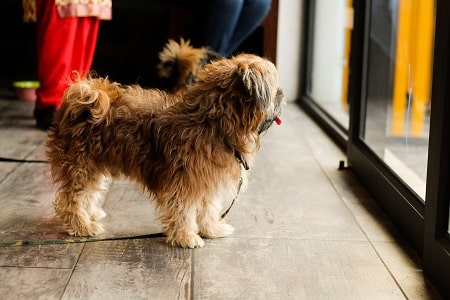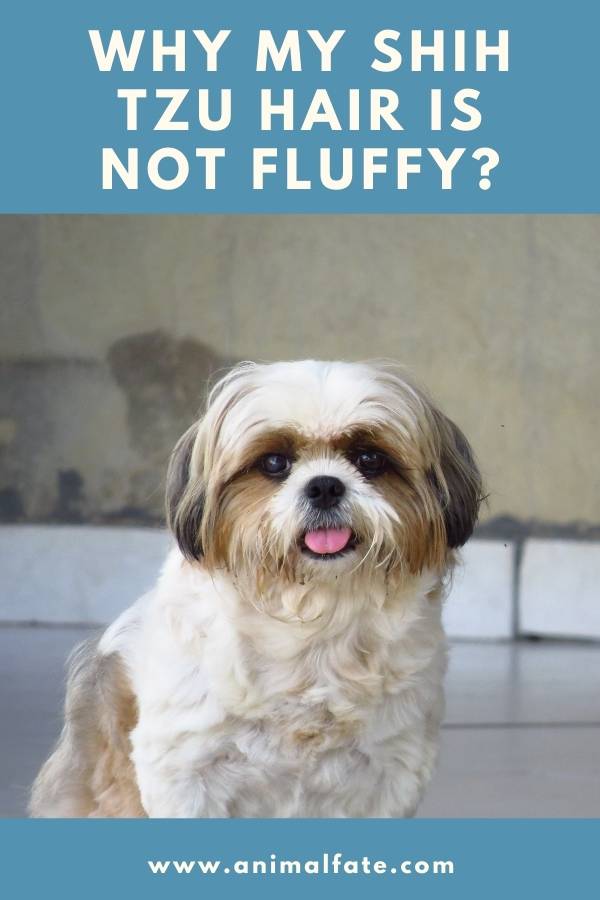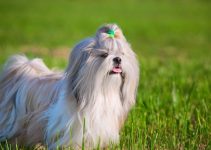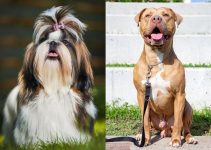A Shih Tzu’s hair is naturally fluffy, so if your pet’s coat isn’t, there are a few reasons why. Your Shih Tzu may not be a pure breed. Or, it may have some hormonal problems during its birth. It can also happen that it lacks proper attention and care.
Shih Tzus’ hair has that fine fluffy texture at an early age. As they mature, the coat becomes rougher and thicker but still fluffy.
If you’re confident that your pet is a purebred, it may just need proper care and attention.
I’ve taken further notes on why your pet’s hair may not be fluffy and some other things you can do about it.
Let’s get into it more!
Contents
How can I make my Shih Tzu hair fluffy?
The best way to make your Shih Tzu’s hair fluff is to fluff dry it. Such a skill takes practice to master. Further, it may seem achievable only in pet groomers. However, you can do it at home.
Fluff drying requires the use of a blow dryer to straighten and volumize your dog’s hair.
Most pet groomers do this to ease up the cutting of the hair. Nevertheless, such a method gives your dog an adorable and fluffy appearance.
For starters, you need a set of specific tools to do it at home. These are:
- Hairdryer
- Leash to tie your dog in place
- Spray bottle
- Slicker brush
Here’s a step-by-step process to fluff up your dog’s hair:
- Wash and shampoo your dog’s coat, then rinse thoroughly afterward.
- Rather than rubbing the fur to dry, pat it instead with the towel.
- Blow-dry your dog’s hair while using the slicker brush. Use the brush to lift the hair. As you blow-dry while brushing, it will fluff eventually.
- Continue doing the same method one part at a time, until you cover the entire coat.
If you have ever seen blow-drying human hair, it almost has similar principles. Blow-drying helps increase the volume of your pet’s coat while keeping it clean and fresh.
Of course, the first attempts are usually pretty tricky. Also, you may find some parts hard to fluff.
Don’t worry about those things. A little more practice and it will make fluff drying an easier task to pull off.
If you’re doing this for the first time, here are some few things to remember:
Don’t:
- let the dryer blow into your pet’s eyes.
- blow hot air. Opt for warm instead.
- let the dryer blow close or directly into your pet’s ears.
Do:
- make sure to give your dog breaks and offer treats while you’re at it.
- make sure to wash the shampoo off thoroughly, as it can weigh down your pet’s hair.
A few more times of doing it should make you improve your work on fluffing your pet’s hair.
You May Also Read – Where do shih tzus like to be petted?
Do Shih Tzu have soft fur?

One thing to notice about Shih Tzu is that they have a soft and long double coat or fur.
Most of the time, Shih Tzus have a long coat. However, it will not always be too lengthy hair.
Since Shih Tzus have soft fur, it should easily get fluffed. Or, if it’s still relatively short, it should be fluffy even with little effort.
For Shih Tzus, the fur is one of the characteristics you can boast. The reason is that their coat makes its appearance more adorable.
If your Shih Tzu has a rough coat, it may probably be because it lacks proper attention.
Try to frequent your Shih Tzu’s bathing once every three weeks. Also, put some effort into their hair like regular brushing.
A few efforts every once in a while goes a long way in maintaining your pet’s coat shiny and soft.
If you find it challenging to do it yourself, go to a groomer once in a while. It will give your dog the overall cleaning the best way possible.
Does Shih Tzu hair change texture?
Yes, Shih Tzus tend to have a change in the texture of their hair as they mature.
As soon as they mature, the primary longer hairs will grow in the follicles.
For this reason, you can see the difference in coats between adult Shih Tzus and the puppies.
Shih Tzu puppies tend to have more refined, thinner, and shorter coats than the adult ones.
During the same time of change, it is also common to see a change in color on the coat.
The change in texture usually starts when Shih Tzu puppies turn four months old.
By the time they reach 9 to 12 months, they should have an adult coat already.
Still, keep in mind that the coat will continue growing. Also, these dogs have their gradual shedding year-round.
You May Also Read – How long can shih tzus hold their bladder?
How do I get my Shih Tzu hair to grow?
A Shih Tzu’s hair, like all other dog hair, has their specific growth speed.
As a puppy, they will have an excellent, soft, and fluffy coat. As these dogs mature, that’s only when their hair will begin getting longer.
Once they have their matured hair, it has a steady growth of half an inch per month.
While there’s no way to influence the growth to be rapid, you can help maintain a shiny and clean coat.
By doing so, you can make the coat grow healthy and better-looking.
What you can do is to regularly clean your pet’s coat, at least once every three weeks.
Brushing and combing will also help make the coat shiny, so it looks good as it grows.
Do Shih Tzu lose their puppy coat?
Yes, Shih Tzus lose their puppy coats as they mature. Like most other breeds, this breed has a fine, thin, and short skin at an early age.
As they mature and age, the hair starts to become longer and thicker.
Usually, such a change becomes prominent as they reach four months old. The growth continues until they have a mature coat. During such a change, you should expect a heavy shedding.
Such a change gets entirely done between 9 to 12 months old. Once they do, they will have a coat that steadily grows an average of half an inch every month.
Do you know if Shih Tzus bark a lot? Check it out!
Summary
A Shih Tzu’s hair is naturally fluffy, especially if it’s a purebred. If you find your Shih Tzu’s hair without volume, don’t worry, you can still do something about it.
If, after a few fluff drying and pet grooming sessions, your pet still has volumeless hair, you may want to consult an expert for an opinion.
By doing so, you’ll be sure about your pet’s condition, and you will know what to do in response to it.
Resources
Image Credits – Photos by Dieny Portinanni and Dushyant Kumar on Unsplash



